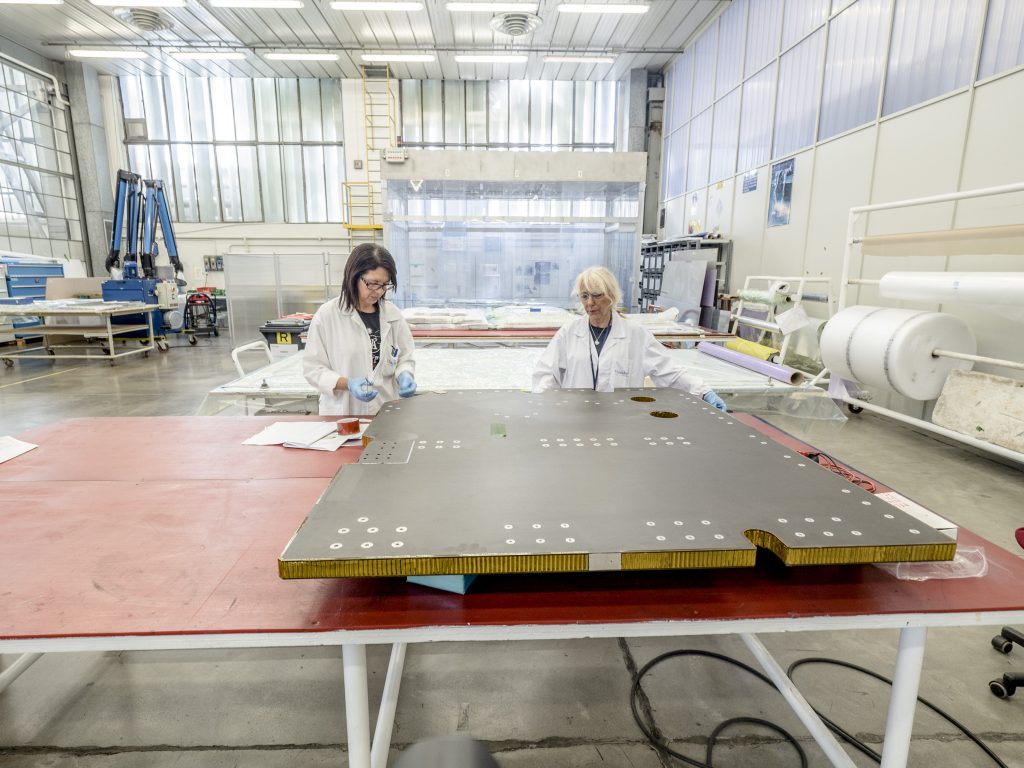In a series of blog posts based on images taken at Thales Alenia Space building facility in Turin, Italy, we will have a look at the vertical panels that form part of Orion’s European Service Module primary structure, these images show work on the second service module that will propel astronauts beyond the Moon and provide essentials such as water, air, electricity and power.
The black panels are prepared on a table before being installed into the Service Module vertically. They are made of a lightweight composite material known as carbon-fibre reinforced-plastic. The honeycomb structure provides rigidity while keeping weight down.
The large holes when installed keep the weight down even more but also allow the technicians and engineers access to the mass of meticulously laid cables to be installed – over 11 km in total! The silver circles are mounting points for equipment and cables. Most of these will be installed in Bremen, Germany, at the Airbus integration hall where the complete service module is assembled.
Inside the four panels two helium tanks will be installed that will be used to push propellant to Orion’s engines during its mission.
Brackets for holding the tank bulkheads (discussed in this blog post) are already attached to the bottom bulkhead and ready for installing the top bulkhead. In the photo below the engineers are standing in the hole that allows room for the propellant tanks.
These images show the beginnings of the spacecraft structure that will send human beings further from Earth than ever before – we will keep you updated in more blog posts.





 Automated Transfer Vehicle page
Automated Transfer Vehicle page ATV blog archive
ATV blog archive
Discussion: 3 comments
Great honeycomb product used in aircraft for quite some time. May want to add some kevlar in that weave to increase strength and durability if “temperature and weight” isn’t an issue. FYI,..various thicknesses of scrap honeycomb can double nicely as a light modifier for photography.
Absolutely fascinating information. I am far from my studies of engineering but it would seem that hydrogen, while much more volatile and flammable, would serve as an overall better mover of the propellants for the following reasons: it’s lighter than helium to reduce takeoff weight, it’s more easily replenished in space. Just a a thought
The honeycomb structure is great. It s really interesting,see the building proccess of such technology